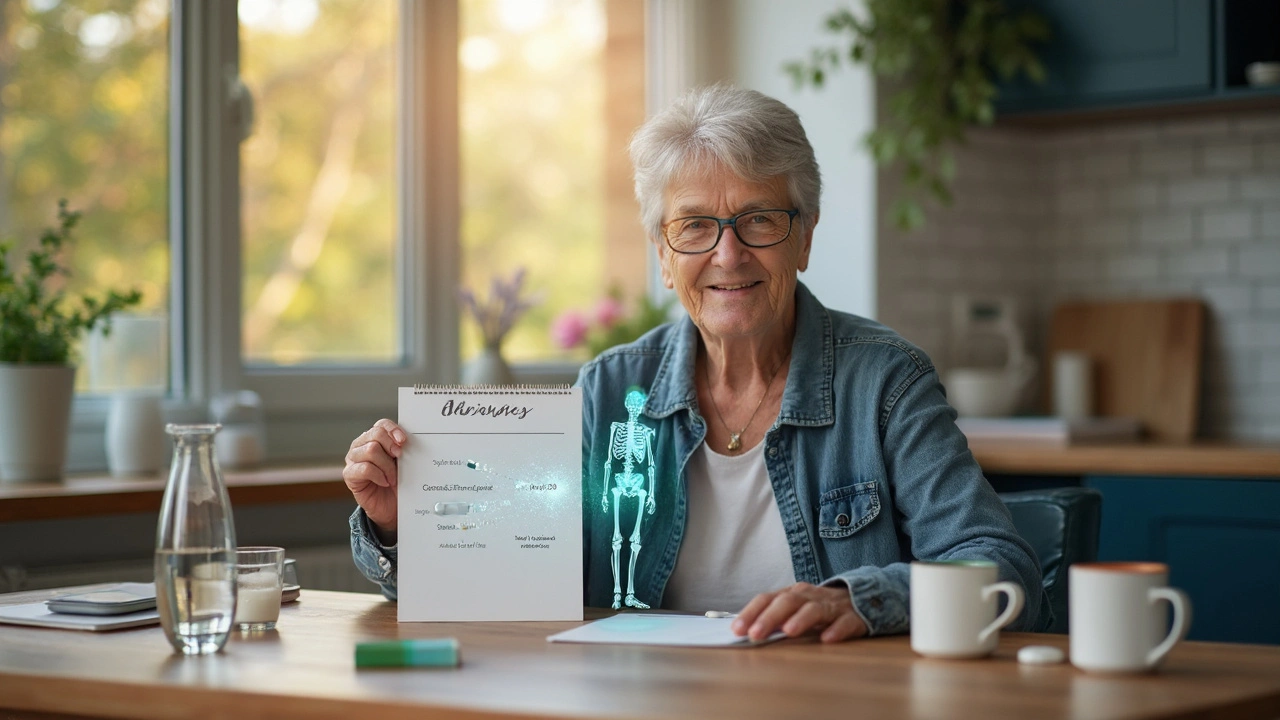Osteoporosis Treatment Guide: Top Ways to Strengthen Your Bones
If you’ve heard the word “osteoporosis” and felt a knot in your stomach, you’re not alone. It’s a condition that makes bones weak and more likely to break, but the good news is there are plenty of ways to fight back. Below you’ll find the most common medicines, lifestyle tweaks, and everyday habits that actually work.
Prescription Medications That Make a Difference
The first line of defense usually involves drugs your doctor prescribes. Bisphosphonates like alendronate (Fosamax) or risedronate (Actonel) are the most widely used. They slow down bone loss by inhibiting cells that break down bone tissue. Most people take them once a week with a full glass of water, staying upright for at least 30 minutes to avoid stomach upset.
For those who can’t tolerate bisphosphonates, Denosumab (Prolia) is an injectable option given every six months. It works by blocking a protein that tells bone‑breaking cells to get active, leading to steady bone density gains.
If you’re at very high risk of fractures, Teriparatide (Forteo) or its newer cousin abaloparatide (Tymlos) can actually build new bone. These are daily injections and are usually limited to two years because long‑term use can cause side effects.
Don’t forget about selective estrogen receptor modulators (SERMs) such as raloxifene, especially for post‑menopausal women who also need heart protection. They act like estrogen on bone but don’t increase breast cancer risk.
Lifestyle Moves That Boost Your Treatment
No pill can replace good habits. Start with calcium and vitamin D—your body needs about 1,200 mg of calcium and 800–1,000 IU of vitamin D daily. Milk, yogurt, fortified plant milks, leafy greens, and a few minutes in the sun will get you there.
Weight‑bearing exercise is another cornerstone. Walking, jogging, dancing, or stair climbing for 30 minutes most days tells your bones to stay strong. Add resistance training twice a week—think dumbbells, resistance bands, or body‑weight squats—to target the hips and spine, which are common fracture sites.
Quit smoking and cut back on alcohol. Both habits speed up bone loss, and quitting can add years of healthier bone mass. If you’re on steroids for another condition, talk to your doctor about extra bone protection; long‑term steroid use is a major red flag for osteoporosis.
Finally, keep track of your progress with regular bone density scans (DEXA). Seeing numbers improve—no matter how small—keeps motivation high and helps your doctor fine‑tune the treatment plan.
Bottom line: combine the right prescription with solid nutrition, consistent exercise, and smart habits, and you’ll give osteoporosis a serious fight. Talk to your healthcare provider today about which mix fits your lifestyle best.

